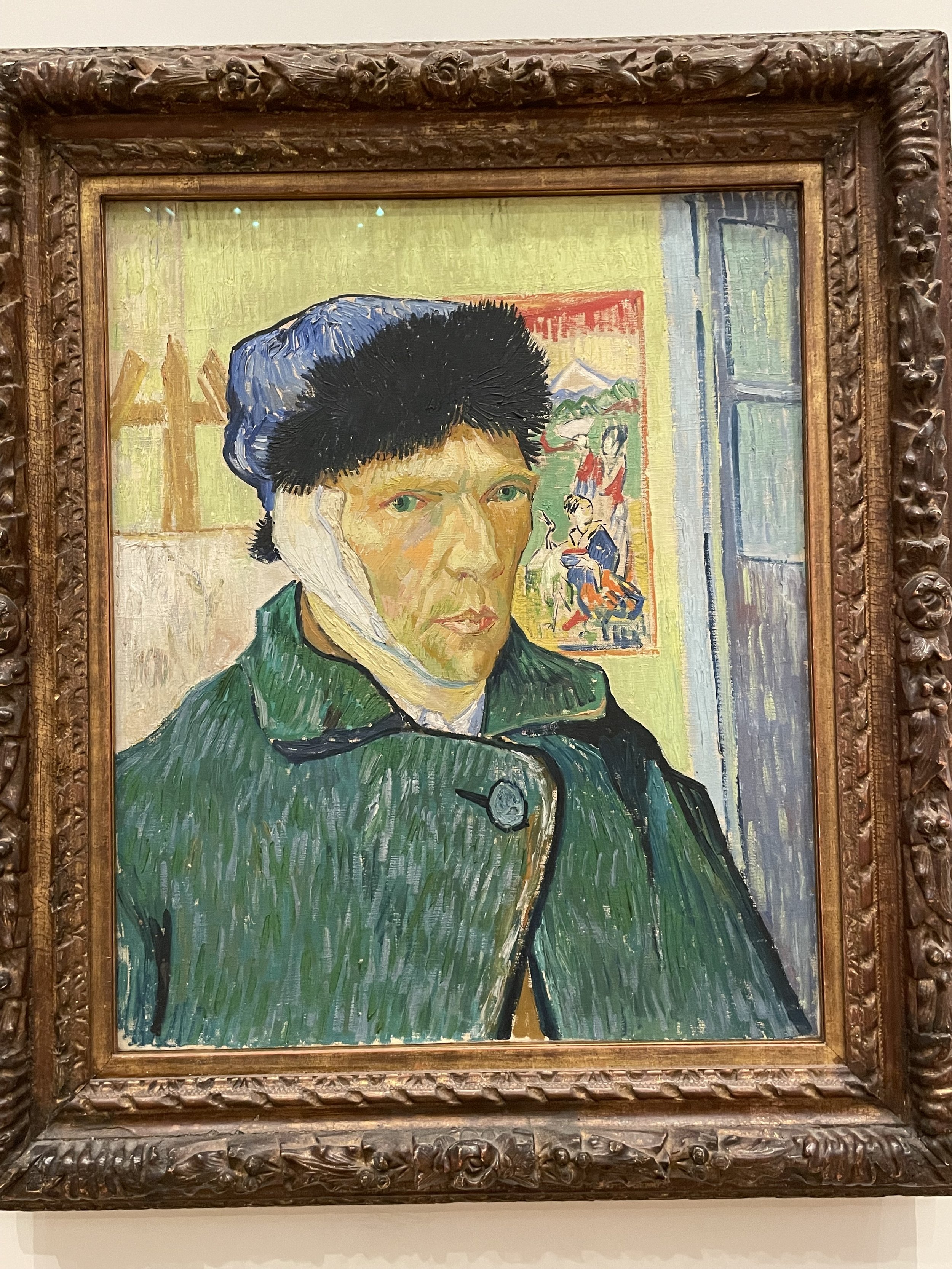Japonism-what to see in The Courtauld Gallery コートールドギャラリーに見るジャポニズムの影響
The Courtauld Gallery
Beautiful grand staircase in the gallery
Located within Somerset House, facing the River Thames and boasting a history of over 450 years, the Courtauld Gallery was opened in 1932 based on the art collection amassed by the businessman Samuel Courtauld. While not as large as the bustling National Gallery or Tate Modern, this gallery offers a quieter atmosphere with fewer visitors, allowing you to explore at your own pace, making it a recommended destination.
Closed for three years from 2018 for renovations, the following year saw the collection traveling to Japan, where it was exhibited at the Tokyo Metropolitan Art Museum as the "Courtauld Museum Exhibition: Enchanting Impressionists."
The collection, filled with works that many have seen elsewhere, particularly those from the Impressionist and Post-Impressionist periods, is truly impressive.
After enjoying the masterpieces, visitors can dine at the restaurant "SPRING" within Somerset House. Despite being a Michelin-starred restaurant, the lunchtime set menu offers delicious dishes at affordable prices (excluding Mondays).
Emerging Japonism in 19th Century
The feeling of nostalgia while gazing at paintings may indeed stem from the resemblance to Japan's original landscapes, ukiyo-e prints, or elements that evoke Japan in some way.
During the era of Impressionism, coinciding with Japan's opening to the world and the introduction of Japanese culture abroad, there was a widespread Japan craze throughout Europe. This was particularly evident during the Second Paris International Exposition where ukiyo-e prints and ceramics were exhibited, greatly influencing contemporary painters. These artists incorporated elements from their collections of ukiyo-e prints and kimonos into their paintings, eventually studying the innovative compositions, colors, and motifs of ukiyo-e and integrating them into their own works.
Thus, "Japonism" emerged, where artists explored Japanese art and incorporated new approaches into Western art.
Let's take a look at some works by the masters influenced by Japan.
The mountain Sainte-Victoire
The mountain Sainte-Victoire By Paul Cezanne. ・ヴィクトワール山 By ポール・セザンヌ c. 1887
The artist expressed dissatisfaction with the techniques of Impressionism and repeatedly painted subjects from his homeland. It wasn't until he was 47 years old that he finally married. This piece from Courtauld's collection was painted the following year. The composition, from the shape of the mountain to the nearby trees and the flow of the river, bears a striking resemblance to Hokusai's work. The large, sprawling pine tree also evokes Japan.
Hokusai’s work and another Cezanne’s The mountain Sainte-Victoire in Philip’s collection in Washington. We can see the similarity here!
Pot of Flowers and Fruit
Pot of Flowers and Fruit By Paul Cezanne c.1888-90
When we think of Cézanne, still life paintings often come to mind, and he's also known as the "father of modern painting." However, the journey to that acclaim was far from smooth. His paintings didn't sell, and he faced ridicule from critics and fellow artists alike. Despite this, he persisted in his belief, refusing to adopt the clear forms of the Impressionists and instead relentlessly pursued his own expression.
It wasn't until he held a solo exhibition at the age of 56 that his fortunes finally turned. His method of depicting things from multiple perspectives and incorporating them onto the canvas had a profound influence on later painters, including Picasso.
Cézanne's concept of treating nature as cylinders, cones, and spheres greatly influenced Picasso's "Cubism" later on. He was ahead of his time, possessing a perspective of observing a single object from various angles!
Self-Portrait with Bandaged Ear 〜自画像〜
Self- Portrait By Vincent Van Gogh 1889 自画像By ヴィンセント・ヴァン・ゴッホ 1889年
After a heated argument with his painter friend and fellow artist, Gauguin, Vincent van Gogh infamously cut off a portion of his own ear with a knife, resulting in a severe injury. This self-portrait was painted by van Gogh a week after leaving the hospital. Although the actual injury was to his left ear, since he painted himself while looking in a mirror, the bandage is depicted on the right ear in this portrait.
The ukiyo-e print in the background was personally owned by van Gogh. Recognizing his brother's talent early on, his supportive and lifelong friend, as well as his brother Theo, who was an art dealer, were involved in its acquisition. Van Gogh was deeply influenced by Japanese art, considering it one of the greatest masters. Although he never actually visited Japan, his admiration for it persisted.
Here, against a background of his beloved yellow, the prominent colors of the ukiyo-e print and easel are depicted, symbolizing van Gogh's strong determination as a painter.
Antibes 〜アンティーブ〜







